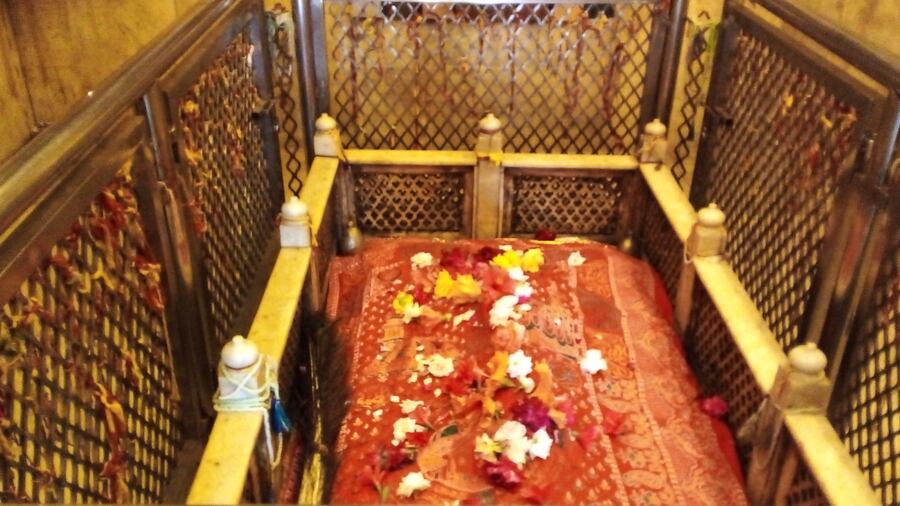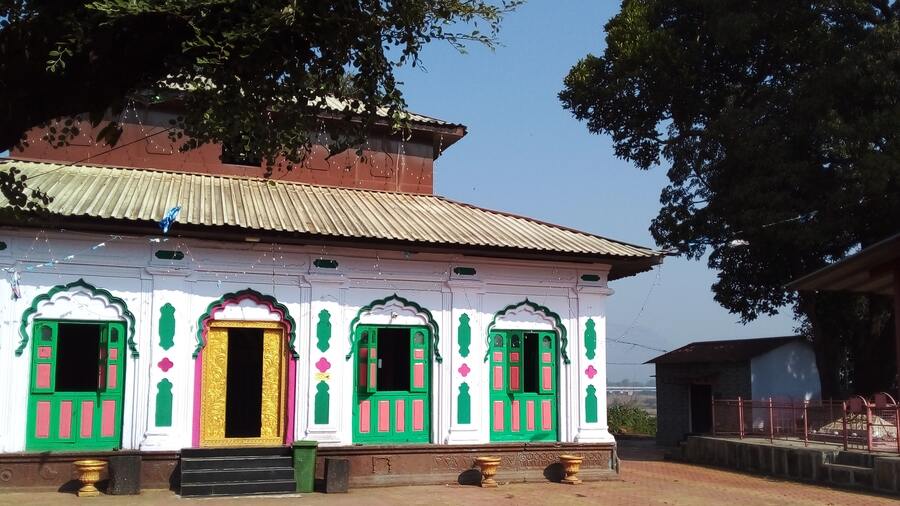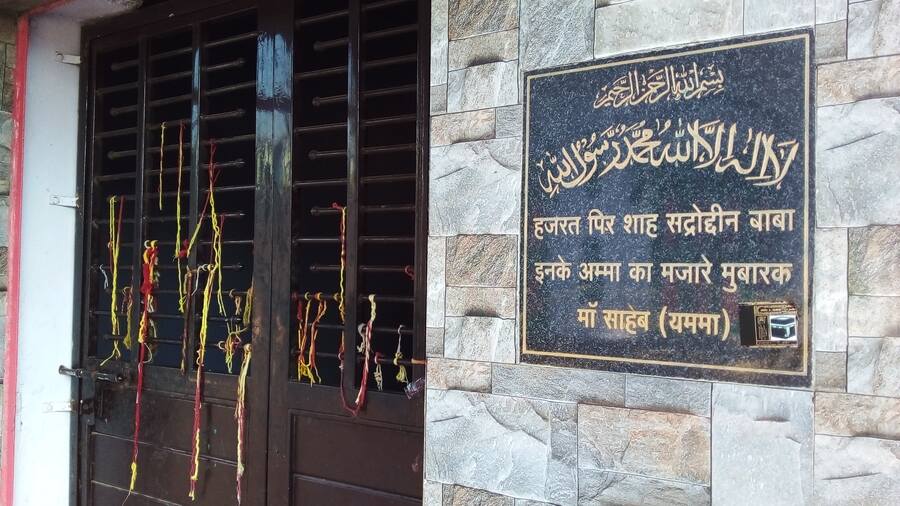Anyone who has travelled from Bengal to Maharashtra or thereabouts by train is familiar with Igatpuri — the station you halt at in the wee hours of morning, the stop before your carriage enters Mumbai. Many would also head to the hill-station destination for its fabled biryani. Igatpuri also continues to be venerated for its proximity to the famous Shiva temple of Trimbakeshwar.
What many travellers may not know is that nestled in one of Igatpuri’s adjacent villages, Pimpri, or Pimpri-Sado, is a 700-year-old dargah known as the Dargah of Hazrat Sadruddin Chishti, a locally revered Sufi saint.
Monument of fables

The sanctum sanctorum of the 'dargah'
About 150km from the metropolis of Mumbai and about 50km from Nashik, on National Highway 3, the dargah of Hazrat Pir Sadruddin Madari Baba continues to be a place where people come for blessings. Until recently, only the devout would visit the village of Pimpri, but with Igatpuri getting a spot on the tourist map for its scenic locales and as a contemporary to getaways such as Lonavala, there are more people heading to the spot.

The plaque above the shrine’s inner sanctorum
Although there isn’t any written account, the stories of the Baba’s greatness continue to be verbally passed down the generations. Mujawar Ashfaque Rehman Patel, who oversees the maintenance of the dargah, is always eager to share them. The legend goes that a king, who was passing through the region on one of his exploits, had run out of food. Noting the abundant livestock, he decided to stop here to stock up and rest. Baba Sadruddin is said to have protected the livestock by miraculously organising food for the king and his entire army. That the livestock, when threatened by the soldiers, had turned into tigers is another story about the dargah, as is the legend of the doodh bauri or well of milk, which is believed to seep milk on special occasions even today.
Celebrations coloured in harmony

A view of the premises showing the dargah, Mazare Mubarak of Aai Sahab and Baba’s two closest Malang devotees
Located in the Western Ghats, Igatpuri is surrounded by the mountains of the Sahyadri and its foothills. In the midst of the mountains overlooking the dargah is a spot named Ghorpau — which literally translates to horse’s feet — where Baba Sadruddin is said to have lived. Later, he took up residence at the location where the dargah stands today. The name of Pir Sadruddin spread far and wide due to many reasons, among which are acts of kindness and religious harmony.
The Baba is known to have been especially kind to childless couples, and it is believed that he brought much happiness into the lives of many families. Every September, on the occasion of Urs, that commemorates his death anniversary, the villagers along with the dargah’s management, organise a large carnival in keeping with Sufi traditions of celebration on the death anniversary of a saint. Thousands of couples, who have had their prayers answered, as well as innumerable believers of all religions attend the occasion.

The Mazar-e-Mubarak of Aai Saheb
What stands out, especially in the face of a world of increasing religious strife, is the fact that the bonhomie that the Sufi saint spread and advocated, flourishes even today. During his lifetime, Sadruddin Baba lived in the care of an elderly Hindu woman whom he regarded as his mother. What is quite unbelievable — and in some parts of the country, unthinkable — is that within the dargah premises, the earthly remains of this lady lie honourably interred at the Mazar-e-Mubarak of Ma Saheb (or Aai Saheb).
Inside a largely Islamic shrine, her memorial structure stands in respect, complete with a symbolic Hindu heirloom — a tulsi altar. Every day, this plant is cared for and a lamp is lit in front of it. The unique practices of the Hazrat Pir Sadruddin Madari Baba Dargah also involve the beating of prayer drums in tandem with the Muezzin's call for prayer.

Inner view of the Mazar-e-Mubarak of Aai Sahab, with the tulsi pedestal
Among Igatpuri’s many natural attractions — monsoon waterfalls, clear azure skies, unpolluted lush hills — is a piece of history that might tempt even the most discerning nature lovers.
Travel details:
- Igatpuri is 150km from Mumbai and 50km from Nashik by road. It is currently well connected by both road and rail
- Igatpuri has a host of options for all budgets for lodging and food. Among the places to eat are Igatpuri Food Hills, Manas Resorts, Parivaar Hotel and countless small and medium eateries all on the highway itself
- Places worth a visit nearby include a number of dams such as Bhauli, Vaitarna, Bhandhardara, temples such as Ghatandevi, Trimbakeshwar, old Shiva Temple at Pimpri, Kapil Muni’s Ashram at Kapildhara, Kavnai. There are also numerous forts dotting the Western Ghats region in and near Igatpuri
- It is recommended to have a certain degree of fitness when travelling to the region, since it is a hilly area and visiting the forts and temples involves walking or hiking






